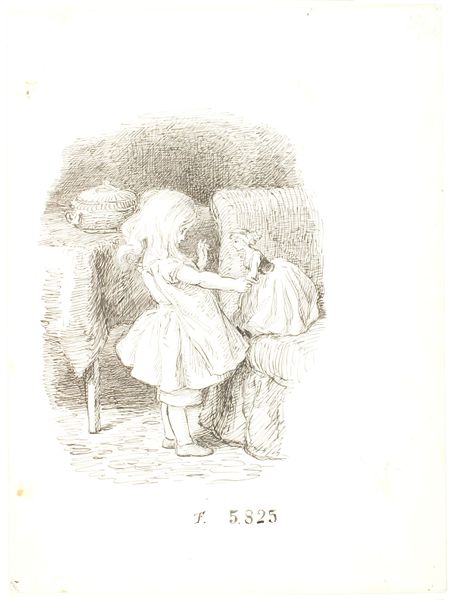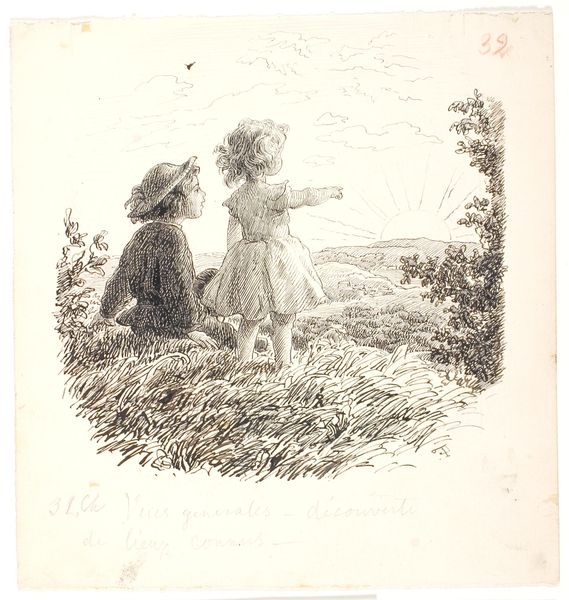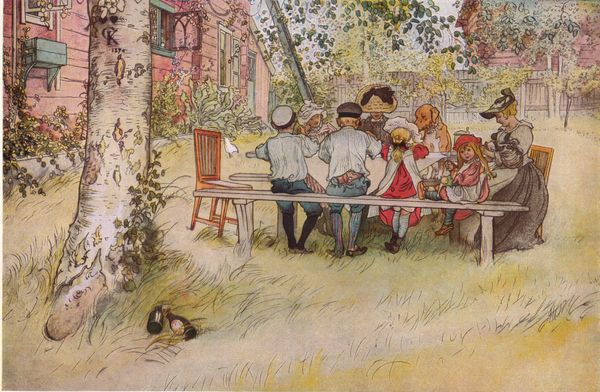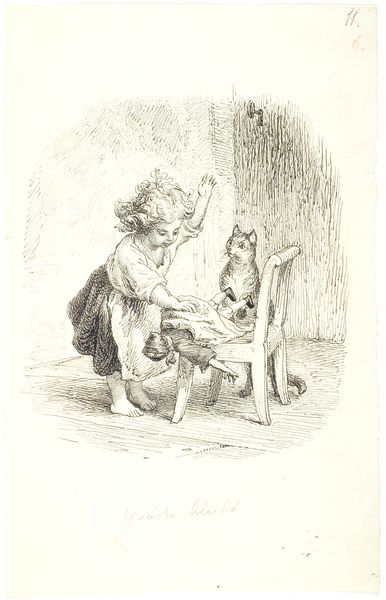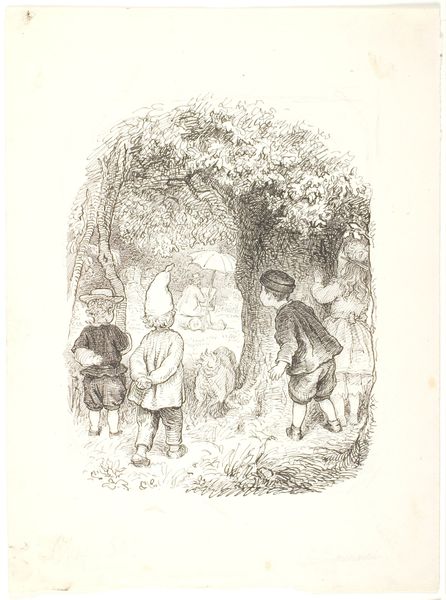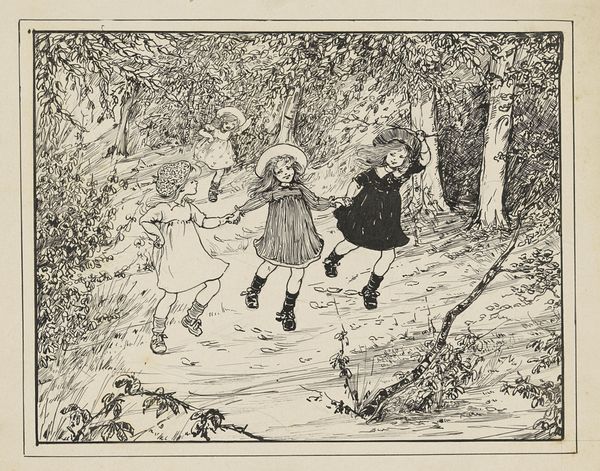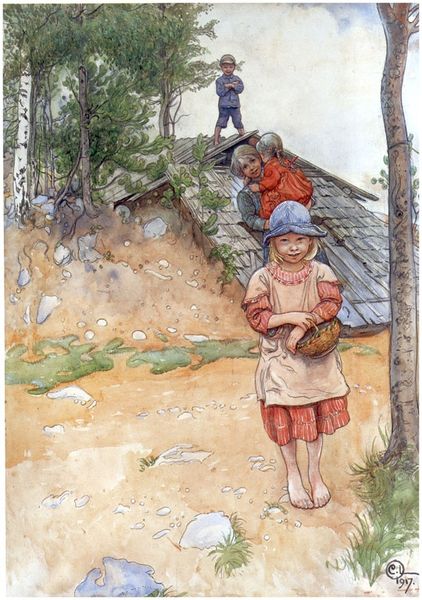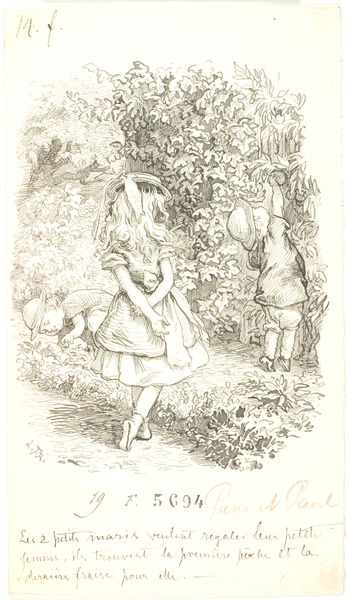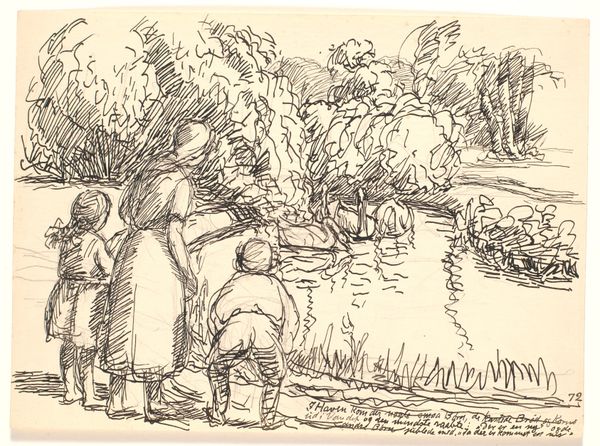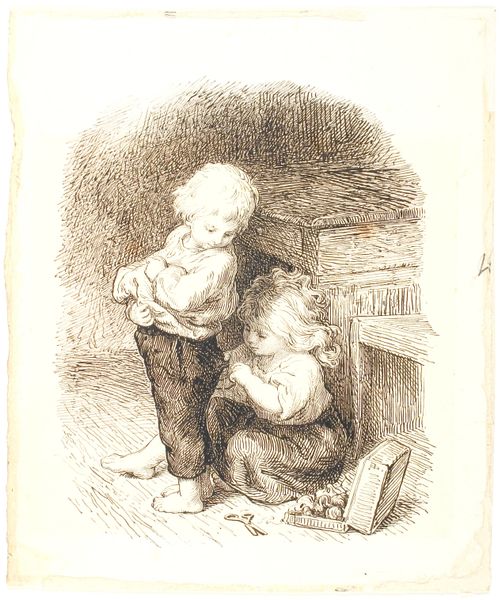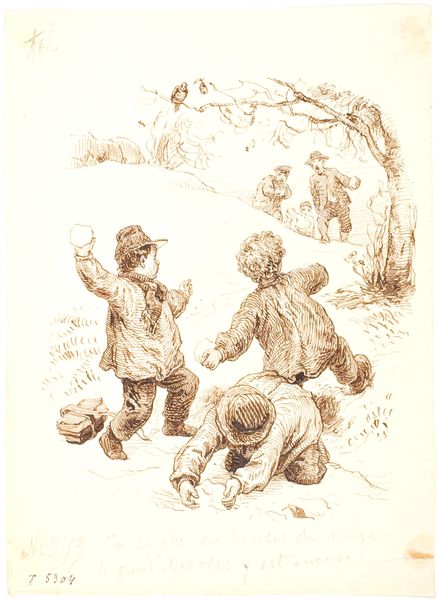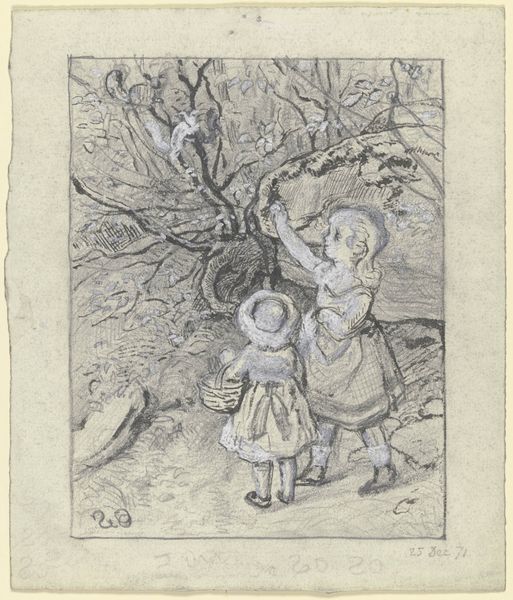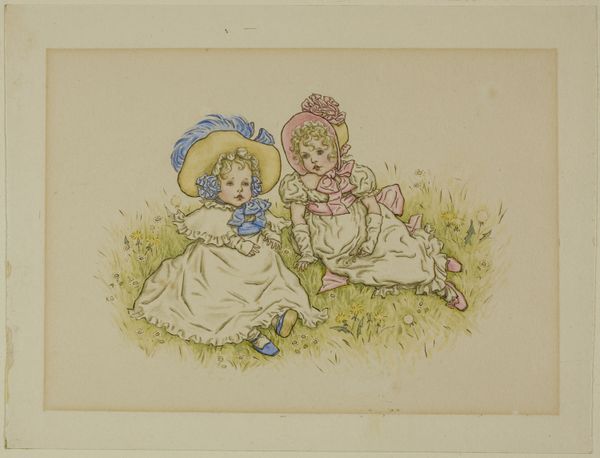
watercolor
#
portrait
#
landscape
#
figuration
#
watercolor
#
romanticism
#
genre-painting
Dimensions: 221 mm (height) x 273 mm (width) (bladmaal)
Curator: Let's look closely at Rørbye’s 1834 watercolor, "Dreng og pige siddende i det grønne"—"Boy and girl sitting in the green." Editor: It has such a wistful air. The children are carefully rendered, but the background seems almost like a blur of strokes. What stands out to you? Curator: I’m immediately drawn to the materiality. Think about the process. The watercolor is thinly applied, almost transparent. Look at how Rørbye used the paper's surface as an active part of the composition, not just a passive ground. This cheap paper was itself a material signifier. Consider the social context: these are not idealized portraits of wealthy children, but a more realistic, arguably romanticized, depiction of working-class children. What kind of labor might they have been engaged in? Editor: Perhaps farm work, given the rural setting and their simple clothes? The girl's clogs look especially hand-crafted, maybe even made by a local artisan. Curator: Exactly! Think of the value placed on handmade goods versus the emerging industrial production of the time. Watercolor was also more accessible, a democratized medium in a way that oil painting wasn't. It’s crucial to examine the accessibility of artistic creation and who has traditionally been excluded. The lack of sharp definition feels relevant too – does it blur class lines, soften realities of labor? Editor: It definitely gives it a gentler feel than a crisp, formal portrait. I hadn't considered the material’s role in democratizing art. Curator: And the availability of such scenes…the production of Romantic images played a significant role in shaping notions about nation and folk. We could consider it even in this work. Editor: I will definitely look closer now when thinking about materiality and cultural contexts. Curator: Me too, art is always showing something else.
Comments
No comments
Be the first to comment and join the conversation on the ultimate creative platform.
